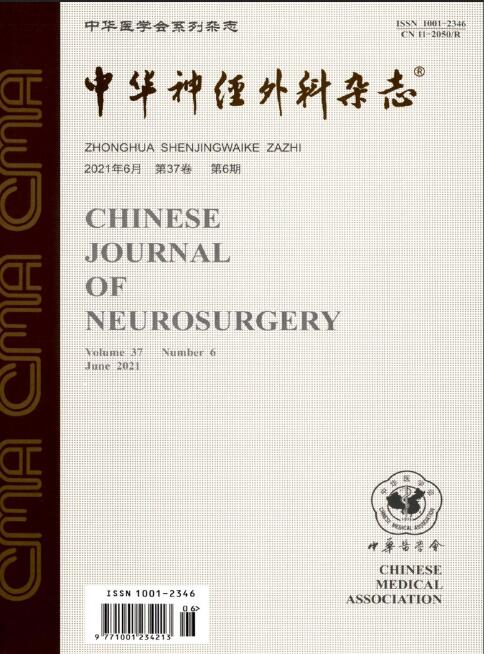Efficacy of small-incision untethering surgery on tethered cord syndrome in children
Q4 Medicine
引用次数: 0
Abstract
Objective To explore the efficacy and safety of small-incision untethering surgery in the treatment of tethered cord syndrome (TCS) in children. Methods We retrospectively collected the clinical data of TCS patients who underwent merely untethering surgery at Department of Neurosurgery, Children′s Hospital, Zhejiang University School of Medicine from May 2015 to May 2018. A total of 72 cases were included and all required transection of merely terminal filament. Among them, there were 33 patients undergoing small-incision operation (small-incision group) and 39 undergoing traditional surgery (traditional group). Comparative analysis of intraoperative incision size, postoperative complications, length of stay and postoperative treatment effect were implemented in both groups. Results All 72 patients underwent surgery successfully. None of the children in the small incision group needed to have the incision extended. In small-incision and tradition groups, the length of the incision was (2.5±0.3)cm and (4.8±1.9)cm respectively, and the length of stay was (4.4±1.8)days and (6.7±2.6)days respectively. Both differences were statistically significant (P 0.05). At the end of follow-up, the total effective rate in traditional group (> 6-41 months) was 89.7% (35/39), while that in small-incision group (>6-27 months) was 93.9% (31/33). There was no statistically difference between them (P>0.05). Conclusion The small-incision untethering for children with TCS who need merely transection of terminal filament seems as effective as traditional large-incision surgery. It has the advantages of small trauma and short length of stay. Key words: Tethered cord syndrome; Child; Microsurgery; Minimally invasive小切口拔管术治疗儿童脊髓栓系综合征的疗效观察
目的探讨小切口拔管手术治疗儿童脊髓栓系综合征(TCS)的疗效和安全性。方法回顾性收集2015年5月至2018年5月在浙江大学医学院儿童医院神经外科接受单纯非手术治疗的TCS患者的临床资料。共有72例病例被纳入,所有病例都只需切断末梢丝。其中,小切口手术33例(小切口组),传统手术39例(传统组)。对两组患者术中切口大小、术后并发症、住院时间及术后治疗效果进行比较分析。结果72例患者均手术成功。小切口组的儿童都不需要扩大切口。小切口组和传统组切口长度分别为(2.5±0.3)cm和(4.8±1.9)cm,停留时间分别为(4.4±1.8)天和(6.7±2.6)天。随访结束时,传统组(>6-41个月)总有效率为89.7%(35/39),小切口组(>6-27个月)为93.9%(31/33)。结论小切口对单纯切断终末纤维的TCS患儿的治疗效果与传统的大切口手术相当。它具有创伤小、停留时间短的优点。关键词:脊髓栓系综合征;儿童;显微外科;微创
本文章由计算机程序翻译,如有差异,请以英文原文为准。
求助全文
约1分钟内获得全文
求助全文
来源期刊

中华神经外科杂志
Medicine-Surgery
CiteScore
0.10
自引率
0.00%
发文量
10706
期刊介绍:
Chinese Journal of Neurosurgery is one of the series of journals organized by the Chinese Medical Association under the supervision of the China Association for Science and Technology. The journal is aimed at neurosurgeons and related researchers, and reports on the leading scientific research results and clinical experience in the field of neurosurgery, as well as the basic theoretical research closely related to neurosurgery.Chinese Journal of Neurosurgery has been included in many famous domestic search organizations, such as China Knowledge Resources Database, China Biomedical Journal Citation Database, Chinese Biomedical Journal Literature Database, China Science Citation Database, China Biomedical Literature Database, China Science and Technology Paper Citation Statistical Analysis Database, and China Science and Technology Journal Full Text Database, Wanfang Data Database of Medical Journals, etc.
 求助内容:
求助内容: 应助结果提醒方式:
应助结果提醒方式:


